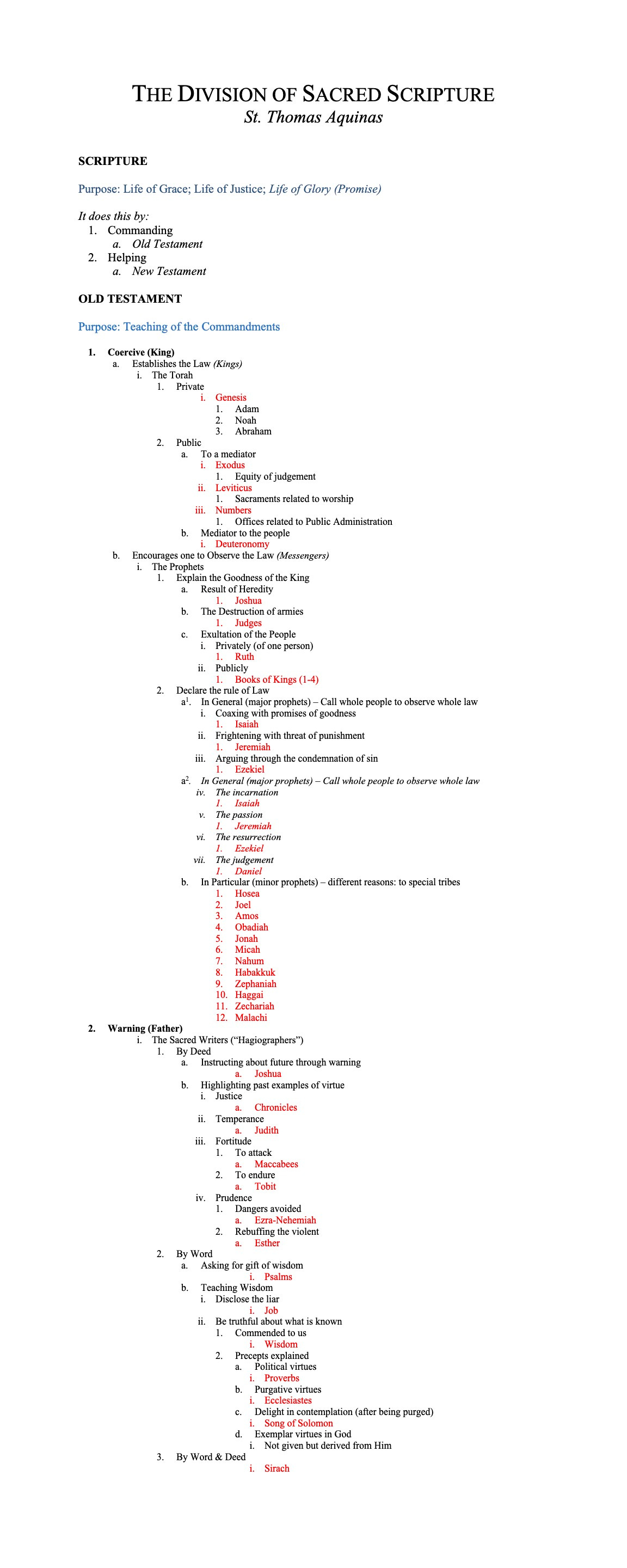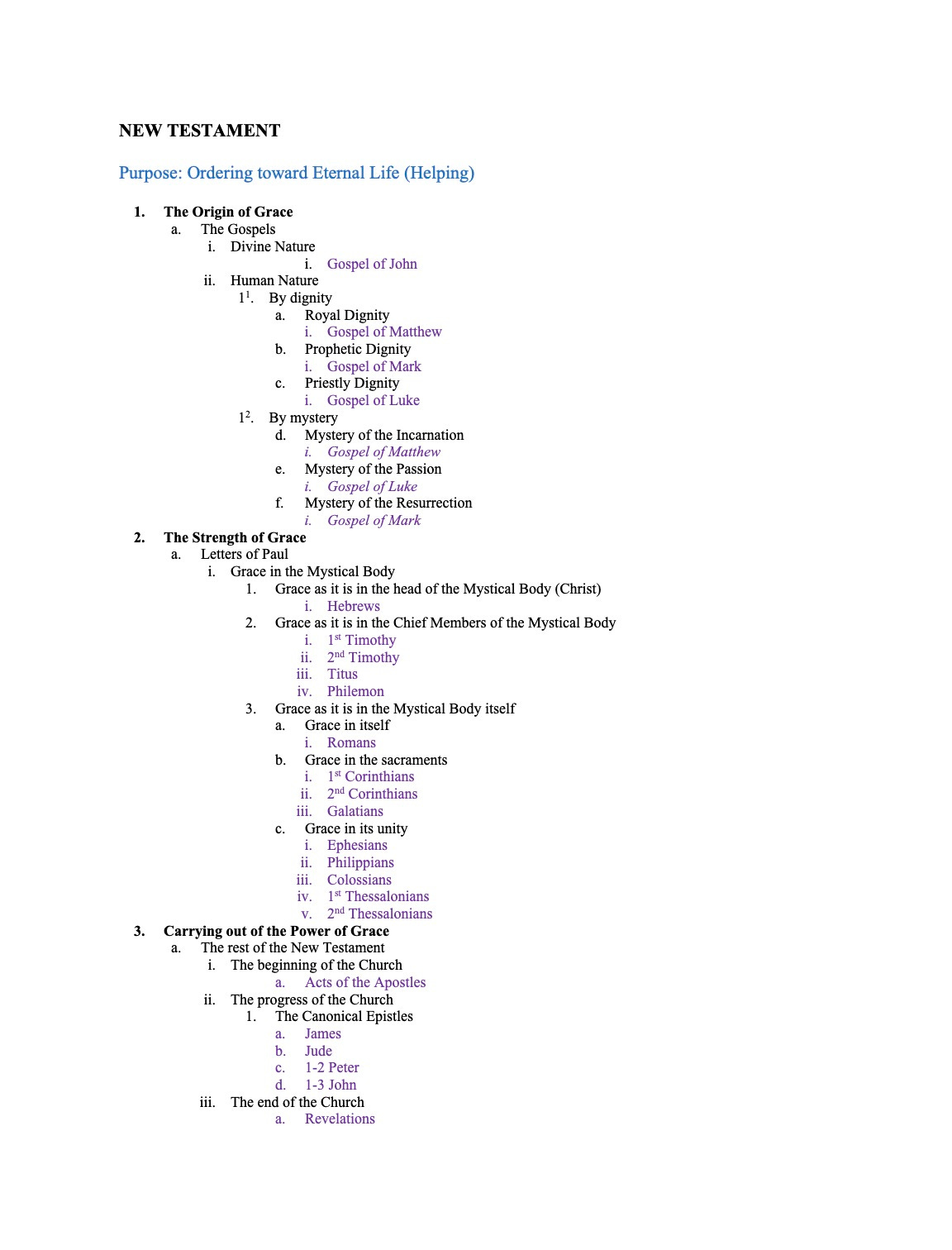The Division of Sacred Scripture
According to St. Thomas Aquinas
THE DIVISION OF SACRED SCRIPTURE ACCORDING TO ST. THOMAS AQUINAS
In one of St. Thomas Aquinas’ most impactful works, Hic est Liber (“This is the Book”), he lays out a division of the entire text of Sacred Scripture. What this means is that he explains how the entire Bible internally relates to itself, from Old Testament to New. He weaves a thread through the entire corpus of scripture and offers us a way to see the work as an integrated whole. What he says is that the entire purpose of the Holy Bible is to teach us about the Life of Grace, the Life of Justice, and the Life of Glory (which is promised to us in the next life if we live out the life of grace & justice). He says that Scripture teaches us that by commanding, and by helping. The Old Testament pertains to commanding; the New Testament pertains to helping.
You’ll notice, further, that in the Old Testament God commands us in two ways: As a King, and as a Father. And then He yet further commands as a King in two ways: by establishing the law (the 5 Books of Moses), and by encouraging us to observe the law (the Books of the Prophets). As a Father, He commands by warning us of the dangers in front- and behind us (the “Sacred Writers”: the wisdom literature and the hagiographers).
The Old Testament is principally concerned with teaching us about the Life of Justice; the New Testament is principally concerned with teaching us about the Life of Grace. What is grace? Where does it come from? What is its nature? What are its effects? What is its relationship to history? All of this is systematically laid out in the books of the New Testament—each mapping onto a different dimension of the above questions.
If you really want to begin to understand scripture more clearly and more profoundly, there is no greater work in the history of Christianity for making the entirety of scripture accessible and comprehensible. The greatest doctor of the Church gives us the greatest key to unlock the code of scripture—and how blessed we are to have such a gift.
I’ve transcoded the entire work into an outline format for my students, and I’m making it accessible for you here today should any of you be interested to see it. I’ve exported it as a .jpeg so that it can be viewed in this Substack post—or you can download the PDF of this same outline at the bottom of this article. By clicking here, or on the link at the top of the page, you can view the entirety of the work in its original form—available through the Aquinas Institute in Latin | English side-by-side.
May God bless you and keep you always. +




Thank you for this. It has clicked so many buttons in my brain.
Thanks, AJ.